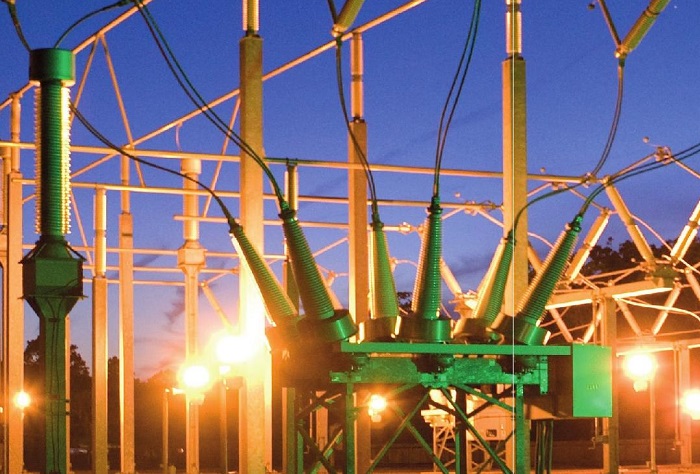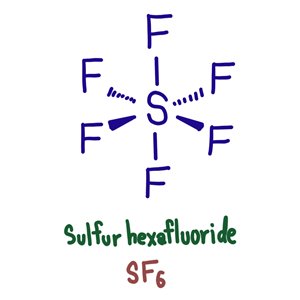SF6 - the greenhouse gas at the heart of our industry

|
Contents |
[edit] Introduction
As the world works out how to tackle global carbon emissions, it is widely understood that renewable energy and a growing, decarbonised electricity grid will play an increasingly vital part. Yet growing reliance on ‘low- to no-carbon’ energy solutions also relies on a remarkable manmade substance, but with a potent environmental sting in the tail.
[edit] World’s most potent greenhouse gas
SF6 is a colourless, odourless and non-toxic gas which is around five times denser than air. Unfortunately, it is also believed to be the world’s most potent greenhouse gas, with a global warming potential 23,500 times more (kilo for kilo) than CO2. If released, it permeates into the atmosphere, where it contributes to global warming for hundreds or even thousands of years.
So why is the world’s most potent greenhouse gas an issue for the global electrical industry? Quite simply, SF6 is an excellent electrical insulator, preventing short circuits in medium and high-voltage electrical installations that would otherwise lead to damage, disruption, fire or explosion. SF6 has been increasingly deployed in an array of power stations, wind turbines and electrical sub-stations in circuit breakers, switchgear and other electrical equipment, often replacing oil-filled circuit breakers that would previously have contained harmful PCBs.
Pressurised SF6 also allows for compact gas-insulated switchgear, which is ideal for indoor and other space-constrained applications. It has a long, reliable track record in these applications and maintenance requirements are low – very handy if your electrical equipment is, for example, part of a mega-wind turbine in the North Sea.
SF6 is just one of a now infamous family of ‘F-gases’. The EU has banned many of the F-gases and while it has already banned SF6 from applications such as double-glazing insulation, SF6 can still be deployed in switchgear to ensure electrical safety and reliability. While the gas is harmless in situ, the Environment Agency oversees UK rules on its recovery, which is necessary when switchgear fails or degrades.
Despite its massive global warming potential, SF6 airborne concentrations are only a tiny fraction of atmospheric CO2, so they only contribute to 0.2% of current global warming. Yet this small but unwelcome contribution is rising, with a near doubling of SF6 atmospheric concentrations in the last two decades, notably due to operational leaks.
All this means that the European Commission is set to revisit the situation in the first half of 2020, to see if suitable alternatives can enable further restrictions on SF6 in electrical switchgear. Various companies have already stepped up with broadly cost-effective alternatives for use in medium voltage equipment, using vacuum and solid insulation technology.
“Everyone in this industry knows you can replace SF6; there is not a technical reason not to do it, and nor is it particularly about costs" says Louis Shaffer of Eaton, one of the leading producers of SF6-free switchgear for medium-voltage applications. However, proven alternatives for high-voltage switchgear may take longer to assess and deploy.
While we wait to see if and when the EU will increase restrictions on SF6, unless the gas is leaking, there seems no sense in removing it from existing switchgear – and certainly not at speed. Instead, it is vitally important that ongoing equipment operation and decommissioning does not let the gas escape.
The days of SF6 in modern electrical switchgear are not over but, in Europe at least, 2020 may be the year when its days are numbered.
[edit] About this article
This article was written by the Electrical Contractors' Association (ECA) and previously appeared on its website in January 2020. It can be accessed HERE.
Other articles by the ECA on Designing Buildings Wiki can be accessed HERE.
[edit] Related articles on Designing Buildings Wiki
- Air conditioning inspection.
- BREEAM Impact of refrigerants.
- Carbon emissions.
- Carbon footprint.
- Carbon Reduction Commitment Energy Efficiency Scheme.
- Climate change act.
- Climate change science.
- Construction 2025.
- Environmental impact.
- Green deal.
- HFC phase out.
- Ozone depleting substances.
- Refrigerant.
- Refrigerant selection.
- R22 phase out.
- UK Climate Change Risk Assessment.
[edit] External references
- Carbon Plan.
- Carbon Reduction Commitment Energy Efficiency Scheme.
- Climate Change Act 2008.
- Climate Change 2013, The Physical Science Basis (Intergovernmental Panel on Climate Change, 2013).
- Environmental Reporting Guidelines: Including mandatory greenhouse gas emissions reporting guidance (Defra, 2013).
- Green Deal
- Reducing the UK’s greenhouse gas emissions by 80% by 2050 (DECC, 2014).
--ECA
Featured articles and news
A change to adoptive architecture
Effects of global weather warming on architectural detailing, material choice and human interaction.
How big is the problem and what can we do to mitigate the effects?
Overheating guidance and tools for building designers
A number of cool guides to help with the heat.
The UK's Modern Industrial Strategy: A 10 year plan
Previous consultation criticism, current key elements and general support with some persisting reservations.
Building Safety Regulator reforms
New roles, new staff and a new fast track service pave the way for a single construction regulator.
Architectural Technologist CPDs and Communications
CIAT CPD… and how you can do it!
Cooling centres and cool spaces
Managing extreme heat in cities by directing the public to places for heat stress relief and water sources.
Winter gardens: A brief history and warm variations
Extending the season with glass in different forms and terms.
Restoring Great Yarmouth's Winter Gardens
Transforming one of the least sustainable constructions imaginable.
Construction Skills Mission Board launch sector drive
Newly formed government and industry collaboration set strategy for recruiting an additional 100,000 construction workers a year.
New Architects Code comes into effect in September 2025
ARB Architects Code of Conduct and Practice available with ongoing consultation regarding guidance.
Welsh Skills Body (Medr) launches ambitious plan
The new skills body brings together funding and regulation of tertiary education and research for the devolved nation.
Paul Gandy FCIOB announced as next CIOB President
Former Tilbury Douglas CEO takes helm.
UK Infrastructure: A 10 Year Strategy. In brief with reactions
With the National Infrastructure and Service Transformation Authority (NISTA).
Ebenezer Howard: inventor of the garden city. Book review.
Airtightness Topic Guide BSRIA TG 27/2025
Explaining the basics of airtightness, what it is, why it's important, when it's required and how it's carried out.























